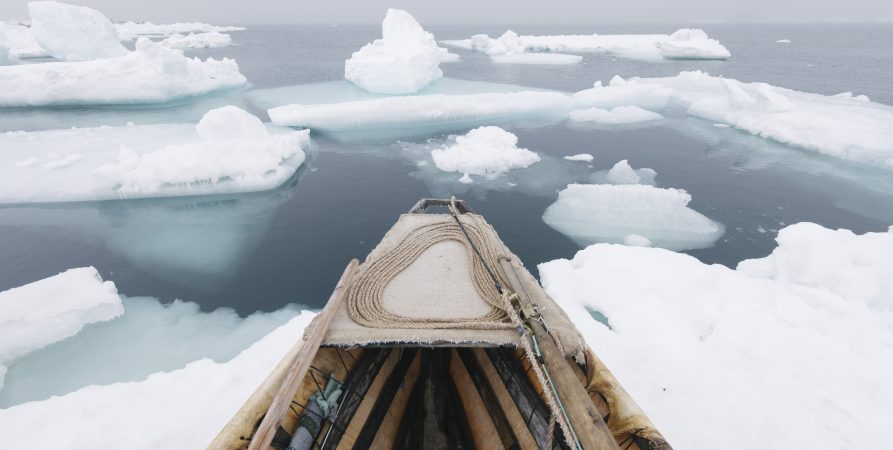Figure
Life Story
During the course of this [the last] century a number of ancient walrus ivory sculptures from St Lawrence Island and adjacent islands in the Bering Sea have come to light, the result of both scientific and uncontrolled excavations. Pioneering research in the area by Collins (1929,1939) has led to the identification of several phases in the prehistoric period, which are succinctly outlined and illustrated by Wardwell (1986).
Foremost among the distinctive and beautiful sculptures from the earliest phase (Old Bering Sea I, also known as Okvik) are walrus ivory figurines, of which this is a complete and fine example. A number of figures in this style were found at a site called Okvik on one of the Punuk islets, off the south-east coast of St Lawrence Island, a name which Rainey (1941:46) translates as the ‘place where many walrus haul up’. Okvik ivories are very often a rich brown or black colour, possibly the result of age and prolonged contact with organic material.
The pointed head, arching brows and long nose are characteristic Okvik style traits. Limbs are seldom represented. Collins distinguishes three substyles (A-C) within the general Okvik style; the present figure with its curvilinear engraving corresponds to substyle B (see Collins et al., 1973 : 3-5; Wardwell, 1986: nos. 31, 37). Neither the sex of the figure nor the meaning of the engraved designs is clear, though it is possible that the arms, legs and genitals of a female are represented on the front.
The significance and function of these prehistoric figurines is not known, though historic carvings of heads and torsos are usually interpreted as spirit images used in shamanic rituals, or as dolls with no specific ritual importance. The former attribution is more likely in the case of these figurines, since in this pre-metal culture considerable time and expertise would have been required to make them with flint and slate tools.
The form follows the natural shape of the walrus tusk from which it is carved. The walrus, with its highly developed upper canines (present in both bulls and cows), was of great importance to Old Bering Sea peoples as a source of food, skin, ivory and bone. Techniques for hunting whales, characteristic of Punuk and later Thule peoples, had not been developed by the Old Bering Sea people. Walrus tusk can readily be distinguished from ordinary walrus teeth, sperm whale teeth, ancient mammoth tusk and other mammal teeth by the darker ‘bubbled’ core which runs down the centre.
Steven Hooper. 1997
Entry taken from Robert and Lisa Sainsbury Collection, Vol. 2: Pacific, African and Native North American Art, edited by Steven Hooper (Yale University Press, 1997) pp. 223-224.
Provenance
Acquired by Robert and Lisa Sainsbury in 1977.
Bequeathed to the Sainsbury Centre, University of East Anglia by Lady Sainsbury in 2014.
On display
Title/Description: Figure
Object Type: Figure
Materials: Walrus ivory
Measurements: h. 152 x w. 40 x d. 33 mm
Accession Number: RLS 1
Historic Period: Old Bering Sea I (200 BC-AD 100)
Production Place: Alaska, Bering Sea, North America, The Americas
Credit Line: Bequeathed by Lady Sainsbury, 2014
In from the Cold: Five Sainsbury Centre Treasures at the British Museum
Objects from the Centre’s collection offer snapshots of life in the Arctic
Continue reading






